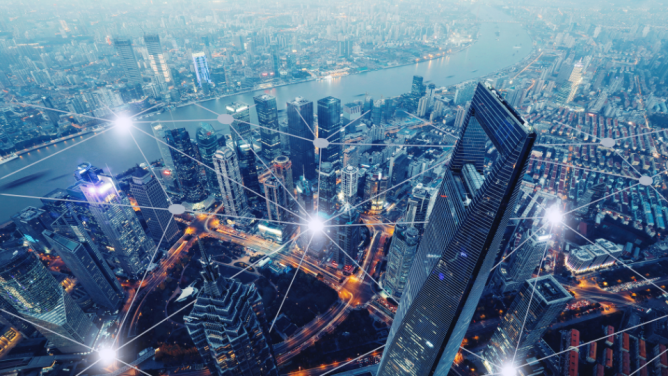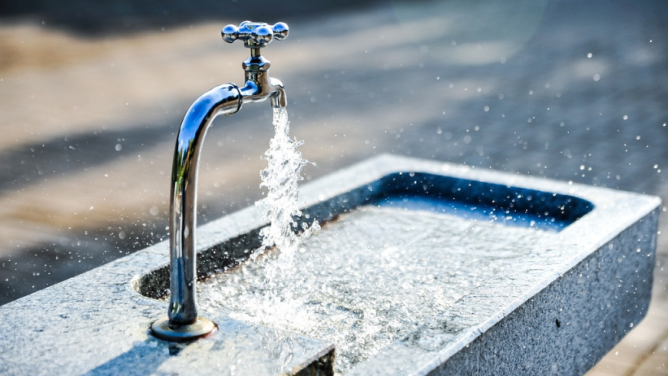We asked her how mobility infrastructure managers see the end of the crisis playing out. Though the discussion is focused on SNCF’s stations, many of the solutions referred to here echo the challenges encountered in all large spaces in and around transport, which will also be expected to adapt, each in turn, to a new context.
_______________________________
In the short-term, how will the large expanses in and around mobility manage the lockdown release process?
This is a central issue for anyone in charge of collective mobility. SNCF Group quickly made the decision to call on AREP to organise the resumption of service in the short-term.
The first matter to take up was social distancing. AREP’s design team worked out a signage scheme that gets the necessary information across to users and shows the acceptable distances between people.
A basic vocabulary was developed. Users are informed where they can stand still while waiting, which areas they should avoid and the pathways they can take. The platform is also a sensitive area, being often very busy. Here, the task consisted of carving out traffic areas, located as close as possible to the doors, and waiting areas with suggested standing spots. Lastly, the agency worked out various seating options that would leave every other seat unoccupied.

Beyond those very short-term components, work will be carried out to improve the air circulation and optimise the space. We will likely be able to take advantage of the outdoor areas adjacent to the stations to expand the waiting areas. The idea is to take back the esplanades, making them more desirable and enjoyable. This can involve adding furniture or vegetation.
With the crisis continuing, we will still be looking to identify any opportunities that emerge. In order to spread the user population across the platforms, additional shelters could be used. This initiative could ultimately turn into an asset for our stations, for instance, if we build photovoltaic power generators into the shelters. We are reworking a significant expanse of land to transform it into a productive zone. Similarly, we are planning to set up hydro-alcoholic gel distribution points — which could later operate on solar electricity. All this is part of SNCF Group’s commitment to achieve carbon neutrality by 2030, which demonstrates quite a bit of determination.
As to technologies, what are some of the tools you can use to manage the overcrowding?
We are obviously thinking about activating display surfaces of all kinds to relay our messages, as long as it’s relevant. However, our focus is not technology or digital.
In the medium term, we are thinking about surface materials. As we all know, some have more antiseptic qualities than others. Copper, for instance, has bactericidal properties. We’re going for a low-tech approach, as it is probably the most effective. Specifically, we want to use levers that resonate with the way users experience the environment around them. The train station is a place that people embrace, so it might not make sense to put an additional medium in there. The various spaces already offer a huge playground.
We have also chosen an all-encompassing approach, not focused solely on the pandemic. The current health issues at stake echo an approach developed by AREP around adapting to heatwave situations. By greening the esplanade areas to create refreshing havens as we’ve planned, we’ll be able to kill two birds with one stone. The same goes for the ventilation aspects. The work we do on the rail stations in response to coronavirus will find its place elsewhere: fostering natural ventilation, working on the morphology of the empty spaces to promote air circulation, etc.
When it comes to architecture and possibly even urban planning, what will change in the design of these spaces?
The crisis we’re experiencing is dystopian, forces us to distance ourselves and hits public transport at its very heart. Rail stations as designed today are places to be experienced and shared. It is essential that they remain so, even in the face of fears that cars will see a revival. In this regard, it is my hope that the rail sector, one of the most virtuous, will receive substantial aid.
The aspiration remains to be able to build more resilient places. We need to think in such a way as to achieve the most fitting, efficient, but also the most inclusive and broadest environment possible. We want stations to remain places where people enjoy being. A number of solutions have already been developed toward this end. This could include spreading out passenger traffic by letting users to start their working day in the station, until the first wave of users has passed. This is function of the Work&Station spaces today. Sustainable architecture is architecture that can be adapted to the many types of uses it is expected to fulfil. We can barricade ourselves in, in the hopes of being unaffected by future shocks, or we can adopt flexibility, adaptation and resilience as our principles. Philosophically, it is rather this second approach that we want to develop.
Will the crisis transform professions?
Architects take into account all user needs to create the places we want to make our own. In this sense, pandemic risks will need to be integrated into those imperatives, but will not be the guiding principle of the design. At least, I hope it won’t.

_____________________________________________________
Airports on edge
In all likelihood, the pandemic spread from its original source by air. With over 4 billion passengers per year, the airline industry thus finds itself particularly at risk today. Consequently, airports are re-examining their security measures. While many of these are similar to those of the rail sector, some are specific. ADP Group and the Ile-de-France Region have, for instance, initiated the Safe Travel Challenge, a call for projects designed to identify innovative solutions for airport health safety. While waiting for the results to come in, we can turn our attention to some of the solutions being deployed. Robotic scrubber-dryers, like those developed by Facilibot, could lighten the load for cleaning teams otherwise over-exposed to the virus. In the same vein, the Hong Kong Airport has set up automatic full-body disinfecting pods . All over the world, testing and temperature control devices are being rolled out. Airbus is developing electronic “noses” : initially designed to detect explosives, they could prove useful against the Coronavirus. Overall, the entire process of airport automation could be sped up. According to Skift, contact-free, robotisation and self-service are set to become the norm.


